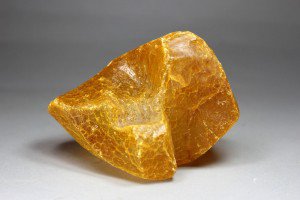Some types of amber have become extremely valuable, so I think listing various tests for amber is useful.

Amber is formed from tree resin which contains succinic acid; when after millions of years terpenes break down and escape from the resin, the resin is transformed into amber. Copal or immature amber is when this process has not been completed.
There are various methods of testing amber to see if it real.
- One is a taste test; licking real amber gives no taste; plastic or polymer forgeries leave a nasty taste
- Copal and plastic fake amber can be dissolved by acetone or alcohol. A few drops of either will make the surface of the fakes tacky; amber is not be affected
- Hot pin will not cause amber to melt. It will burn away like incense; fakes may burn and badly smell
- Mix one part salt to two parts water; amber will float most fakes will sink
- Amber when rubbed becomes electrostatically charged and will pick up fragments of paper. This was discovered by the ancient Greeks who called it ‘electron’
- Amber scratches easily
- IR-spectroscopy is the most reliable scientific test for identifying fossil resins. Baltic amber gives IR-spectrum segment called “Baltic amber shoulder”.
- Amber can be used as incense due to its very pleasant smell when burnt unlike its copies
- Baltic amber fluoresces under UV light but this test does not work very well with heated amber or heated cherry colour
Note: Natural amber contains microscopic bubbles and when heat is applied the bubbles dissolve and the amber becomes clear.

